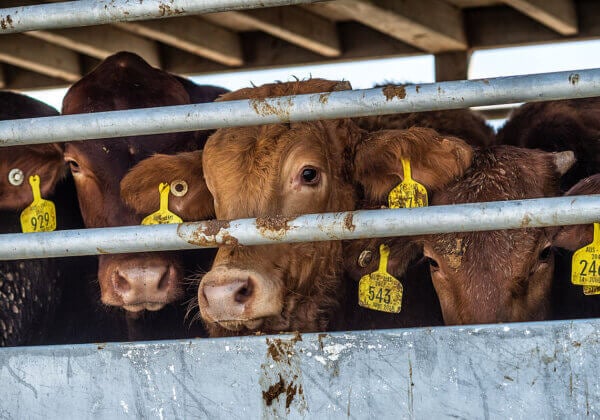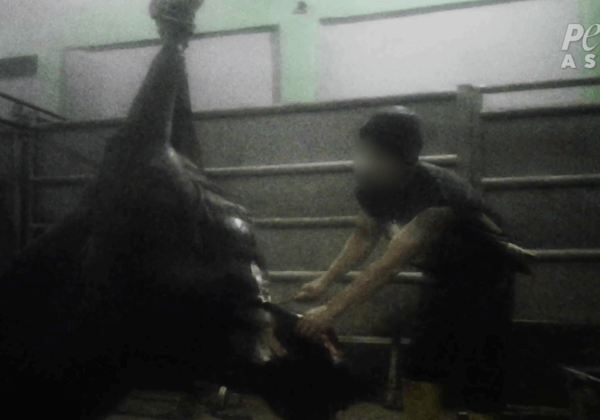1080, the Killer Poison: What You Need to Know
Sodium fluoroacetate, commonly called 1080, is a poison used extensively to kill so-called “pest” species, such as foxes, rabbits, wallabies, cats, feral pigs, and wild dogs.
It is colourless, odourless, and tasteless and is therefore easily ingested by companion animals as well as native species. Its victims – intended or otherwise – experience a slow, agonising death.
Here are facts you need to know to keep your animal companions safe and to speak up for the native animals who are being poisoned.

Is it safe?
1080 is toxic to all living species, including microbes, plants, insects, birds, and humans. In mammals, it causes birth defects, reduced fertility, and damage to the reproductive system, brain, heart, and other organs. Anecdotal evidence indicates that its use may be linked to an increased risk of developing cancer. There are reports that the Nazis considered using the poison on Jewish prisoners in concentration camps but decided not to because of the danger to the guards.
1080 is usually put down by hand or dropped from aircraft over areas where populations of certain “target” animals are found. Although attempts are made to limit the species affected, animals who feed on poisoned corpses can be killed, too. Humans are also at risk if they ingest the chemical.
In addition, poisoned animals may contaminate nearby waterways. Faecal contamination of waterways by wallabies killed by 1080 has been raised as an issue in parliamentary enquiries. Since the poison is highly soluble, it spreads very quickly through water and up food chains. And because its presence is difficult to detect, it could be a plausible weapon in bio terrorism.
#WARNING: Disturbing footage.1080 #poison results in a slow and agonising death. There is no antidote.It does not discriminate.Native and non-native animals suffer horribly, including companion animals.It is time to #ban1080 poison in Australia!We have created an online petition for those who cannot print and deliver the hard-copy petition: http://animal-lib.org.au/petitions/140-ban-1080-petition-to-senate-of-australiaIf possible, please also continue to sign and share the hard-copy petition. The PDF can be downloaded here: http://bit.ly/2cnixmr. Send to 506/89 York St Sydney NSW 2000
Posted by Animal Liberation on Tuesday, September 6, 2016
Where is it used?
1080 is still used in Australia, Israel, Japan, Korea, Mexico, and New Zealand. It is banned in most countries, including the US, where it was outlawed in the early 1970s because of civilian deaths.
Does it work?
1080 certainly causes a great deal of suffering, but there’s no proof that it offers a real solution to environmental damage from introduced or “pest” species. The so-called “culling” of animals is neither a suitable nor an effective method of limiting populations. In fact, it can often lead to an increase in the number of animals present in a given area, as it creates a more suitable habitat for increased reproduction.
What’s the alternative?
Humane, long-term population-control techniques do exist. Possible solutions include immunocontraception for target animals. In one European study, a long-lasting fertility suppressant succeeded in establishing an 89 per cent reduction in the fertility of feral female goats that lasted for at least two years after treatment. And immunocontraception has already been used on companion dogs in some situations.
Other humane methods include reducing the availability of appropriate shelter and placing exclusion fencing at appropriate points.
Symptoms of 1080 poisoning?
In dogs, the signs of poisoning are usually noticeable within half an hour of ingestion but can take more than six hours to show. Symptoms include vomiting, anxiety, disorientation, and shaking. These quickly develop into frenzied behaviour with running and screaming fits, drooling, uncontrolled paddling, and seizures, followed by total collapse and death. This agony may go on for up to 48 hours.
If you notice any of these symptoms in your animal companion, seek medical attention immediately.
If you know that 1080 is being used in your local area, it’s best to walk your dog in an alternative location.
Euthanasia was the only choice left to ease his suffering.
Posted by Stuff on Wednesday, January 20, 2016
What can I do to help other animals affected by 1080 usage?
Councils will often place signs in the area to notify residents when the poison is being used. You may also see its usage reported in local media. If you discover that your local council is using it, please speak out. Urge the council to concentrate its resources on non-lethal methods rather than poisons.
Inform other local residents about the issue, and urge them to speak out, too. You could even share this post on local Facebook groups. The more people who take a stand, the more likely it will be that councils will make the decision not to use 1080.
Torturing and killing animals will never restore balance to the natural environment.
The only reasonable solution is either to make the land itself inhospitable to them or to control their populations by reducing their fertility.
Using chemicals that leave dogs and other animals to die slowly in agony is not an acceptable practice. Please, share this post with everyone you know and encourage people to speak out against 1080 poison.







